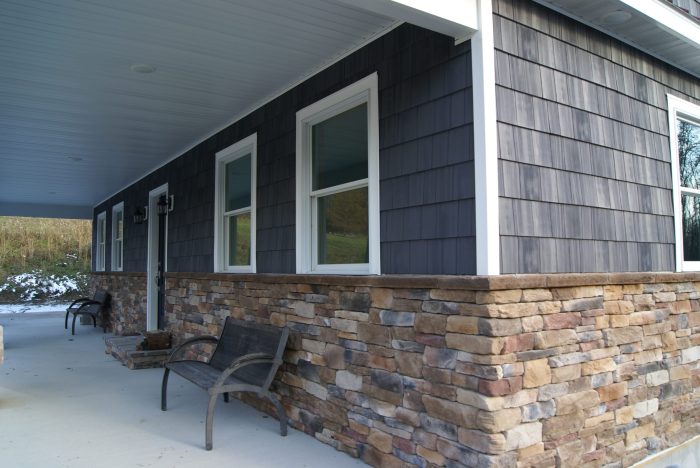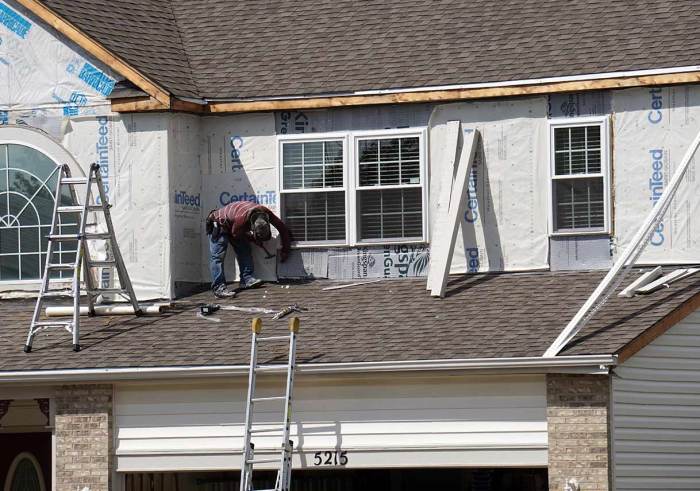Changing Siding on House: A Comprehensive Guide
Embarking on the journey of changing siding on a house brings forth a multitude of considerations and decisions. From meticulous planning to flawless execution, this guide delves into the intricacies of transforming your home's facade with new siding. Join us as we explore the essential steps and tips to ensure a successful siding replacement project.
Delve deeper into the process in the following paragraphs to discover valuable insights and expert advice on navigating the world of siding replacement.
Planning for Siding Replacement
Before embarking on changing the siding of your house, proper planning is crucial to ensure a smooth and successful process. Planning allows you to make informed decisions, avoid unnecessary expenses, and achieve the desired outcome. Here are some essential considerations and steps to take before replacing your house siding:
Selecting the Right Type of Siding Material
When choosing the type of siding material for your house, consider factors such as durability, maintenance requirements, aesthetic appeal, and cost. Common siding materials include vinyl, wood, fiber cement, metal, and stucco. Research each option thoroughly to determine which one best suits your needs and preferences.
Measuring the Area Accurately
To purchase the correct amount of siding material, you need to measure the area of your house accurately. Start by calculating the square footage of each wall that needs to be covered. Take into account doors, windows, and any other openings that will not be covered by siding.
It is advisable to add a buffer of around 10% to account for any errors or waste during installation.
Removing Old Siding

When it comes to replacing siding on a house, one of the crucial steps is removing the old siding safely and efficiently. This process requires attention to detail and caution to prevent any damage to the underlying structure of the house.
Steps for Safe Removal
- Start by removing any trim pieces around windows, doors, and corners using a pry bar and hammer.
- Use a siding removal tool to gently pry the siding panels away from the house, starting from the top and working your way down.
- Be careful not to damage the sheathing or insulation underneath the siding while removing the panels.
- Dispose of any nails or screws properly to avoid any safety hazards during the removal process.
Common Challenges and Solutions
- Warped or damaged siding panels can be challenging to remove. In such cases, use a heat gun to soften the siding material before attempting to pry it off.
- Hidden mold or mildew behind the siding can pose health risks. Wear protective gear like gloves, goggles, and a mask while removing the siding to protect yourself.
- If the siding is painted, scraping off the paint before removal can make the process smoother and prevent damage to the new siding during installation.
Proper Disposal of Old Siding
- Check with your local waste management authorities for guidelines on disposing of old siding material.
- Consider recycling the old siding if possible to reduce waste and environmental impact.
- If recycling is not an option, arrange for a dumpster rental or hire a waste removal service to dispose of the old siding responsibly.
Preparing the Exterior Surface
Before installing new siding, it is crucial to properly prepare the exterior surface of your house. This step ensures that the new siding will be installed correctly and will last for many years to come.
Inspecting and Repairing Damage
Inspect the existing exterior surface for any signs of damage, such as rot, mold, or water damage. Repair any issues found before proceeding with the new siding installation. It is essential to have a solid and stable surface to attach the new siding to.
- Check for any loose or damaged boards and replace them as needed.
- Address any areas with water damage promptly to prevent further issues.
- Repair any cracks or gaps in the existing surface to ensure proper insulation and weatherproofing.
Weatherproofing and Insulation
Proper weatherproofing and insulation are key components of preparing the exterior surface for new siding. These steps help improve energy efficiency and protect your home from the elements.
- Apply a weather-resistant barrier to the exterior surface to prevent water infiltration.
- Install or upgrade insulation to improve energy efficiency and maintain a comfortable indoor temperature.
- Consider adding a vapor barrier to further protect against moisture and mold growth.
Installing New Siding
When it comes to installing new siding on a house, it's important to follow a step-by-step process to ensure a proper and secure installation
Cutting and Fitting Siding Pieces
- Measure twice, cut once: Before cutting any siding pieces, make sure to measure accurately to avoid any wastage.
- Use a utility knife or a circular saw: These tools can help you make clean and precise cuts on the siding material.
- Test fit before securing: It's important to test fit each siding piece before fastening it in place to ensure a proper fit.
- Leave room for expansion: When fitting siding pieces, make sure to leave a small gap at the ends to allow for expansion due to temperature changes.
Fastening the Siding Securely
- Use galvanized nails or screws: To prevent rusting and corrosion, it's best to use galvanized fasteners when securing the siding.
- Follow manufacturer's guidelines: Different types of siding materials may require specific fastening methods, so be sure to follow the manufacturer's recommendations.
- Space the fasteners properly: Make sure to space the nails or screws according to the manufacturer's instructions to ensure a secure attachment.
- Consider using a nail gun: If you have a large area to cover, a nail gun can help speed up the installation process while ensuring a secure attachment.
Finishing Touches and Maintenance
After the new siding has been installed, it's important to add some finishing touches to enhance the overall look of your home. Additionally, regular maintenance is crucial to ensure the longevity of the siding and preserve its appearance. Here are some tips to help you with the finishing touches and maintenance of your siding.
Adding Finishing Touches
- Consider painting the trim or adding decorative shutters to complement the new siding.
- Install new house numbers, a mailbox, or outdoor lighting fixtures to enhance the curb appeal.
- Clean the windows and doors or consider replacing them for a fresh look.
Importance of Regular Maintenance
Regular maintenance is key to prolonging the lifespan of your siding and keeping it in good condition. Here are some maintenance tasks you should regularly perform:
- Inspect the siding for any signs of damage, such as cracks, holes, or warping.
- Clean the siding at least once a year to remove dirt, mold, and mildew buildup.
- Trim any trees or bushes near the siding to prevent damage from branches or leaves.
- Check for any gaps or openings where pests could enter and seal them to prevent infestations.
Cleaning and Preserving Different Siding Materials
Different siding materials require specific care to ensure their longevity and appearance. Here are some tips for cleaning and preserving common siding materials:
- Vinyl Siding:Clean with a mixture of water and mild soap using a soft brush or cloth. Avoid using harsh chemicals or abrasive tools that could damage the surface.
- Wood Siding:Regularly stain or paint the wood to protect it from moisture and UV damage. Clean with a solution of water and mild detergent, and avoid pressure washing to prevent damage to the wood.
- Fiber Cement Siding:Clean with a mixture of water and mild detergent using a soft brush. Avoid using abrasive tools that could scratch the surface.
Wrap-Up

As we wrap up this discussion on changing siding on house, remember that the key to a successful project lies in thorough planning, precise execution, and diligent maintenance. By following the guidelines Artikeld in this guide, you can elevate the aesthetic appeal and structural integrity of your home with ease.
Cheers to a seamless siding replacement journey ahead!
Helpful Answers
How crucial is planning before changing siding on a house?
Planning is essential as it ensures you select the right materials, accurately measure the area, and anticipate any challenges that may arise during the process.
What are the common challenges faced when removing old siding?
Common challenges include stubborn fasteners, damaged underlying structure, and proper disposal of the old siding material in an eco-friendly manner.
Why is preparing the exterior surface important before installing new siding?
Preparing the surface ensures a smooth installation process, helps identify and address any structural damage, and enhances the longevity of the new siding.
What are the best practices for fastening new siding securely?
Using appropriate fasteners, following manufacturer guidelines, and ensuring proper alignment are key to securely fastening new siding and preventing future issues.
How can I maintain the newly installed siding for longevity?
Regular maintenance such as cleaning, inspections for damage, and timely repairs are crucial for preserving the new siding and extending its lifespan.




